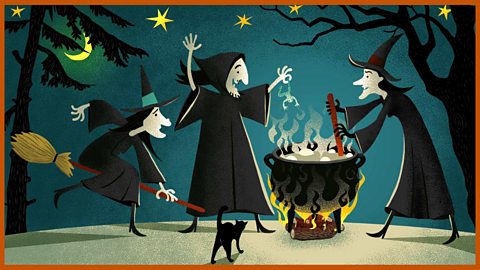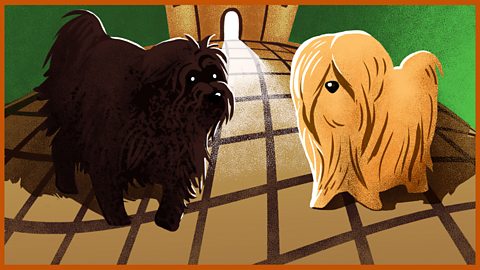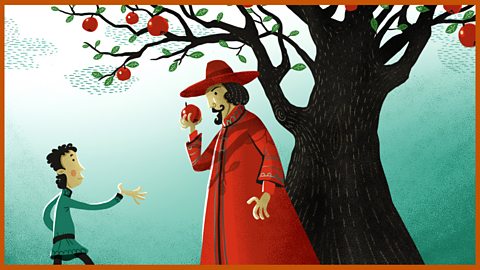The Tempest: The Isle of Noises - a Frank Cottrell-Boyce story inspired by The Tempest. Read by Julian Rhind-Tutt.
Synopsis
This programme is inspired by The Tempest, which is thought to be the last play that Shakespeare wrote. Some of its speeches and themes are seen as an explicit farewell from Shakespeare to his audience. It is also one of only two plays (the other being A Midsummer NightÔÇÖs Dream) whose plot is entirely ShakespeareÔÇÖs invention.
In The Isle of Noises, we meet a ÔÇśreal lifeÔÇÖ shipwrecked sailor, Ned Blood, who has a chance encounter with Shakespeare outside the Blackfriars Theatre and goes on to help Shakespeare create some of the special effects used in the first performances of The Tempest at Blackfriars. NedÔÇÖs own shipwreck story seems to inspire Shakespeare to write CalibanÔÇÖs famous lines describing the magic of the island, ÔÇśBe not afeard, The isle is full of noisesÔÇÖ and Ned appears to recognise in the final lines of the play that Shakespeare is saying farewell to the theatre with a crowning achievement that (to use NedÔÇÖs words) ÔÇśis like every play you have ever written sirÔÇŽÔÇÖ

╠ř
╠ř
Ideas for use in the classroom
History
NedÔÇÖs chance encounter with Shakespeare is outside the Blackfriars Theatre. This was an indoor playhouse used by Shakespeare in his later career. Plays would often be performed during the summer at the outdoor Globe theatre and during winter in the more intimate, indoor Blackfriars. Children could research the history of theatre entertainment in ShakespeareÔÇÖs times including both the Globe and Blackfriars.
Design and Technology/Computing
Children could research the design of the Globe and Blackfriars theatres, then design sketches/ cross sections for their own modern or Elizabethan outdoor or indoor theatre, with a view to making and evaluating their own designs.
Music/Computing
The Tempest is one of ShakespeareÔÇÖs most lyrical and musical plays. Musical interludes were very popular in the indoor theatre (and partly necessary to allow intervals for trimming candle wicks!) One of the most famous songs is ArielÔÇÖs song:
Full fathom five thy father lies;
Of his bones are coral made;
Those are pearls that were his eyes:
Nothing of him that doth fade
But doth suffer a sea-change
Into something rich and strange.
Sea-nymphs hourly ring his knell
Burthen Ding-dong
Hark! now I hear them,ÔÇôDing-dong, bell.
Children could improvise and compose their own melodies or accompany a recital of this song with appropriate percussive sound effects. The Isle of Noises has a real focus on sound effects, which Ned helps to develop. Children could create their own percussive accompaniments for key aspects of the story such as the creation of The Tempest/ shipwreck and try to emulate/modify the sound effects used in the broadcast.
Creative writing
Children could create their own magic spells to conjure up a storm, just as Prospero does at the start of the play. This could be done as an acrostic poem spelling out TEMPEST. Children could write a series of diary entries for Ned Blood based on his meetings with Shakespeare in the re-telling. They could write an empathetic poem or story from the perspective of Caliban as ProsperoÔÇÖs slave.
Drama and performance
CalibanÔÇÖs speech about the strangeness and beauty of the island is perfect for a poetry discussion, leading to a recital by heart inline with KS2 Curriculum requirements.
Be not afeard; the isle is full of noises,
Sounds and sweet airs, that give delight and hurt not.
Sometimes a thousand twangling instruments
Will hum about mine ears, and sometime voices
That, if I then had waked after long sleep,
Will make me sleep again: and then, in dreaming,
The clouds methought would open and show riches
Ready to drop upon me that, when I waked,
I cried to dream again.
Children could be encouraged to freeze-frame parts of the story of The Tempest (the banishment of Prospero and Miranda/ The crew of the ship during The Tempest/ Caliban being ordered to work by Prospero/ the drunkards worshipping Caliban as a God/ themeeting of Miranda and Ferdinand etc.) and/or of NedÔÇÖs own story. Thought-tracking techniques could be used in conjunction with the freeze-framing to encourage children to think about how the principal characters feel at key points in the story.
Art
What do Caliban and/ or Ariel look like? They are fantastical and magical creatures and have been depicted on stage and in paintings for centuries. Children could look at pictures of recent and historical portrayals and create their own designs.
PSHE/RE
Was Prospero a good man or a bad man? He has been badly treated by his brother and he obviously loves his daughter Miranda dearly, but he does some bad things too; he takes the island away from Sycorax and enslaves Caliban (and arguably Ariel too). Healso seeks revenge by raising the tempest. This could form an interesting moral discussion about his character.
See Teachers' notes below for more ideas

╠ř
╠ř
More from this series
Macdeath. audio
A story inspired by Macbeth, written by Pamela Butchart and read by Shirley Henderson

The Taming of the Kat Dog. audio
A Gareth P Jones story inspired by The Taming of the Shrew. Read by Verity-May Henry.

Hamlet Lives Forever. audio
A story inspired by Hamlet, written by Horatio Clare and read by Julian Rhind-Tutt.
